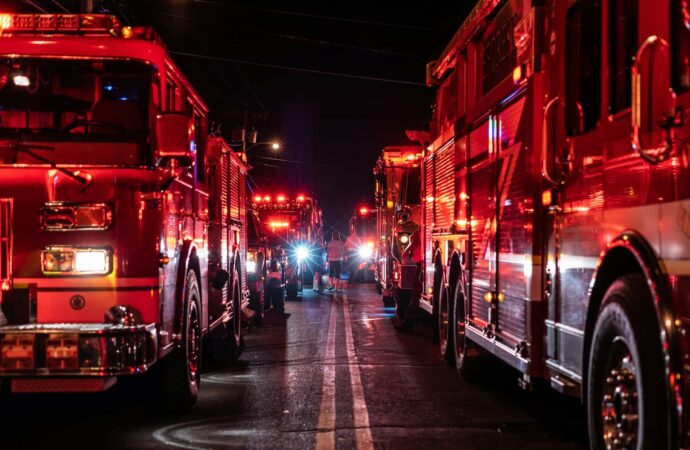In today’s unpredictable world, crisis scenarios have become part of our daily lives. Whether it’s geopolitical tensions, climate-induced disasters, or cyber threats, these challenges are no longer distant possibilities—they’re happening now. And when the stakes are high, it’s not enough to have a plan. You need absolute confidence that your most essential systems will work, no matter what.
At the heart of any emergency response is one critical component: communication.
Critical communication is more than just a network—it’s a specialized system built to withstand chaos. Designed for life-or-death situations, it continues to function when everything else shuts down. Without it, alerts can’t be sent, rescue teams can’t coordinate, and lives hang in the balance.
So how do we make sure that communication holds strong when it matters most? Understanding how critical communication works—and why it’s so vital—is the first step.
What is Critical Communication?
Critical communication isn’t your everyday phone service or Wi-Fi connection. It’s a robust, purpose-built infrastructure created to deliver reliable voice and data transmission during emergencies. This isn’t something you’ll find bundled with your mobile plan—it’s the backbone of public safety, national security, and vital sectors like energy, transportation, and healthcare.
Its biggest strength lies in its resilience. These systems stay online during power outages, natural disasters, or times of massive network overload. They’re designed to work where typical communication channels fail. Police forces, firefighters, medics, military units, and infrastructure operators all depend on them to keep operations running smoothly and safely.
Imagine a police officer coordinating a high-risk operation or paramedics navigating to a crash site in real time. Without seamless communication, coordination breaks down. In the industrial world, a sudden outage at a power plant could escalate quickly if there’s no rapid response system in place. Critical communication ensures that even under pressure, vital information keeps flowing.
Where Is It Used?
Whenever lives are on the line, critical communication steps in.
Police use it to coordinate everything from routine patrols to high-risk operations. Firefighters and paramedics rely on it to communicate in real time when every second matters. It ensures emergency services stay connected in the middle of a flood, blackout, or large-scale event where mobile networks might crash.
In the energy and industrial sectors, these systems help monitor and secure critical infrastructure. If a transmission line goes down or a power plant faces a threat, critical communication enables instant response, preventing service disruptions and mitigating financial or environmental damage.
The Technology Behind the Mission
The technology behind these systems has evolved. For a long time, Land Mobile Radio (LMR) was the gold standard—great for voice communication, but limited when it came to transmitting data. Today, with growing demand for real-time video, GPS, and data sharing, broadband technologies like LTE and 5G are increasingly being integrated into the mix.
TETRA (Terrestrial Trunked Radio)
In Europe, TETRA is the gold standard. Developed by the European Telecommunications Standards Institute, it was initially built for government and security services. Its strength lies in its ability to cover large areas, especially remote or rugged terrain, and to keep working even if the main network goes down—thanks to a “direct mode” that allows devices to talk to each other without infrastructure.
Project 25 (P25/APCO-25)
North America’s answer to TETRA is Project 25. Tailored for law enforcement and emergency services, P25 offers seamless digital radio interoperability, replacing older analog systems while adding features like secure messaging and real-time data. It’s often deployed via vehicle-mounted radios, portable devices, and repeaters to maintain coverage across wide areas.
P25’s second generation, introduced around 2012, increased spectrum efficiency and added powerful features like dynamic transcoding. This makes it ideal for high-stakes situations where secure, uninterrupted communication is essential.
Both TETRA and P25 are built on the same principles: reliability, security, and the ability to function in extreme conditions. These aren’t just communication tools—they’re mission-critical lifelines.
How Critical Communication Infrastructure Works
The infrastructure supporting these systems is meticulously designed. Every component, from the physical towers to the digital platforms, is built with redundancy in mind. A single point of failure simply isn’t acceptable. Networks are layered, coordinated across regions and even countries, and backed by emergency protocols that ensure continuity.
There are two main categories of critical communication systems. Mission-critical networks are used by emergency services to protect human life. Business-critical systems support industries that rely on constant communication, like public transport or energy providers. Regardless of the category, these networks deliver near-instant transmission, extremely high uptime (often 99.999%), secure encryption, message prioritization, and even direct communication between devices when infrastructure is compromised.
Challenges and the Future of Critical Communication
As with all technology, the field of critical communication is evolving. One major challenge today is blending traditional PMR (Professional Mobile Radio) systems with newer broadband networks. LTE and 5G allow for fast data transfer and real-time situational awareness—but they’re not always as dependable under duress.
The solution lies in hybrid systems. These combine the speed and functionality of broadband with the trusted stability of radio communication. This gives emergency teams the best of both worlds—high-speed data and ultra-reliable voice. In critical situations, that balance can make all the difference.
Another priority is standardization. Systems need to work seamlessly across agencies and regions. That’s why the core goals of critical communication are summed up in the “three Rs”: resilience, reliability, and recovery. Networks must withstand disruption, deliver consistently, and bounce back fast if something goes wrong.
Looking ahead, the future of critical communication will depend on smart integration. Combining new technology with the strengths of traditional systems will create networks that are faster, safer, and more adaptable. As the threats we face grow more complex, so must the tools we use to respond.
The Bottom Line: Communication That Saves Lives
Critical communication is more than just technology—it’s about saving lives. Whether it’s coordinating first responders during a flood, securing infrastructure against cyberattacks, or simply making sure help arrives in time, one thing is clear: without strong, reliable communication, there is no effective emergency response. And when every second counts, it’s communication that turns urgency into action.










Leave a Comment
Your email address will not be published. Required fields are marked with *